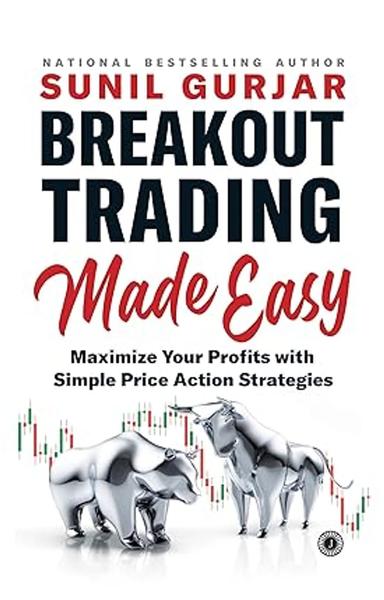As a trader, I have been using classical chart patterns since the beginning of my trading journey which has given me the edge to not only grow my capi- tal multiple times, but also preserve my capital during static market conditions. This is the only strategy which has statistically beaten all other types of trading strategies in the market. It stands out because it enables traders to ride the big trends in the market with defined limited losses. Your mantra when it comes to trading breakouts should be to try to spot a real price trend early and get on it, as it offers bigger potential returns on your trades.
However, if you are new to trading, this is often easier said than done. It re- quires practice to know the difference between a real breakout and a fake one. Setting smart price goals and stop-losses (the price at which our analysis goes wrong and we need to exit the trade, to prevent losses) is also not an easy task. Tο do this, you will need to know the basic rules and strategies of breakout trading which we will discuss in the subsequent chapters.
To understand breakout trading better, we need to be clear about certain con- cepts which are used in it. Let's take a look at different types of markets to under- stand the different conditions which may prevail in the market while we are do- ing breakout trading.
A price series that continually closes either higher or lower (on average over a defined number of periods) is said to be trending. An upward trending market is one that may fluctuate up and down but on average tends to close periodically higher. A downward trending market ends periodically lower regardless of in- terim moves. Securities in any asset class tend to show trending behaviour of some kind.
A sideways market consists of relatively horizontal price movements that occur when the forces of supply and demand are nearly equal for some period of time. This typically occurs during a period of consolidation before the price continues a prior trend or reverses into a new trend.
A ranging market is a market where the security prices move back and forth be- tween a price range of a high price level and a low price level. The highest price level is formed with a resistance line, whereas the lowest price level is formed with a support line.
Support and Resistance
A stock trader's most essential (and challenging) task is predicting the securities future price. It's impossible to reliably predict when prices will rise (or fall). As a consequence, the idea of support and resistance provides a decent frame- work for making sense of price fluctuations. Trends may be recognised and trad- ing choices can be made with the aid of support and resistance levels.
A support or resistance level is established when the price activity of a market reverses and changes direction, putting behind a market peak or trough (swing point: a turning point price in the past).
What is a breakout?
A breakout is a potential trading opportunity that occurs when an asset's price climbs above or falls below a resistance level (explained in chapter 2) on increas ing volume of a security. This happens when the price of a stock moves outside the defined support or resistance level, chart patterns, trend line, moving aver age, with increasing volume (all discussed later in the book). When the stock price breaks over resistance, a breakout trader will enter a bullish long position (wherein they trade for a longer period of time and buy the security at a lower price then sell it at a higher price), and when the stock price breaks below sup- port, a breakout trader will enter a bearish short position (wherein they trade for a short period and sell the security at a higher price then buy it at a lower price). Breakouts are frequently connected with chart patterns such as triangles, flags, wedges, and head-and-shoulders, trend line, moving average and so on. These breakouts occur when the price moves consistently, resulting in well-defined support and/or resistance levels. Traders then keep an eye on these levels for breakouts. If the price breaks above resistance, they may initiate long positions, if the price breaks below support, they may establish short positions. Breakout trading is a trading method that seeks to enter a breakout trade as soon as the price breaks out of its range. It is a way for market participants to take a position in the early stages of a trend.


%2FAccounting%2B-%2BBeginners%2BGuide.png&w=384&q=75)
%2FInvesting%2BEssentials%2Bfor%2BBeginners.png&w=384&q=75)
%2FWhat%2Bis%2BImpact%2Band%2BValues%2BBased%2BInvesting.png&w=384&q=75)
%2FKey%2BPlayers%2Bin%2BInvesting.png&w=384&q=75)
%2FDerivatives%2B-%2BBeginners%2BGuide.png&w=384&q=75)
%2FEssentials%2Bof%2BFinancial%2BPlanning.png&w=384&q=75)
%2FAngel_%2BSeed%2BInvesting.png&w=384&q=75)
%2FStyle%2BBased%2BInvesting.png&w=384&q=75)
%2FFundamental%2B101.png&w=384&q=75)
%2FInvestment%2BMastery%2Bfrom%2BMarket%2BLegends.png&w=384&q=75)
